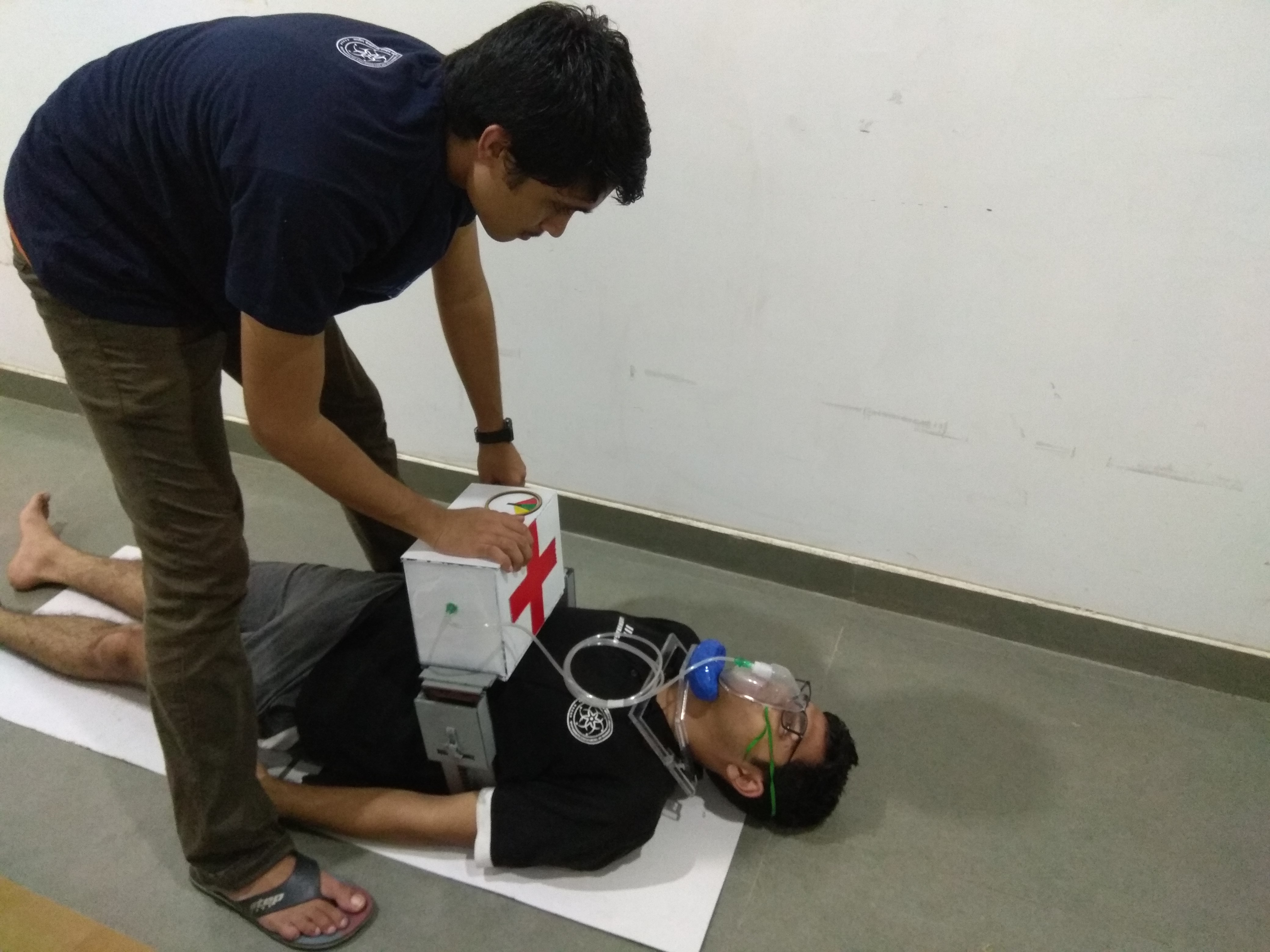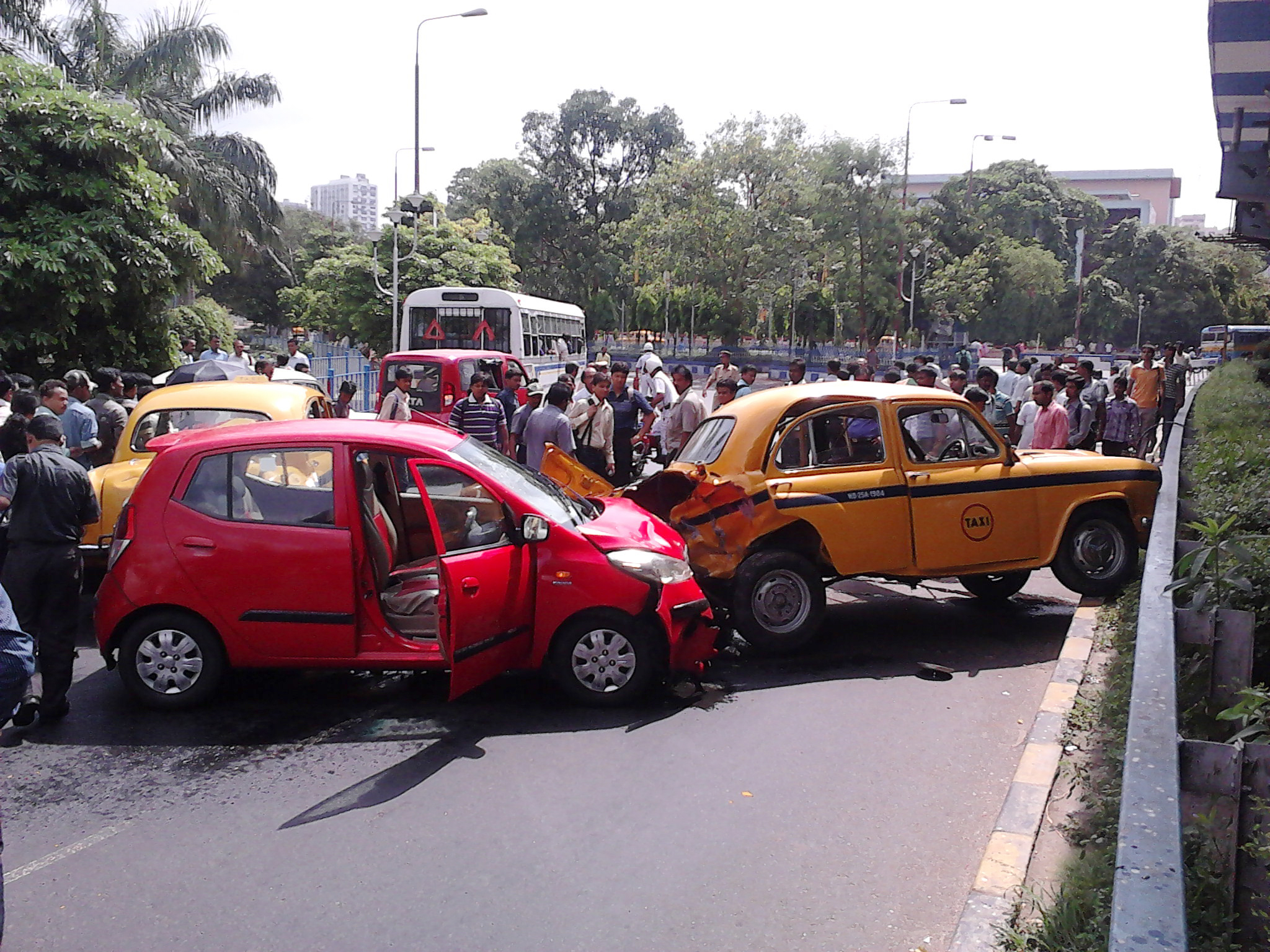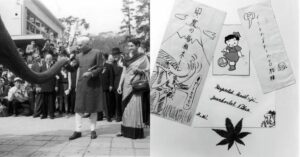Golden Hour, CPR, Good Samaritan Law: Life-Saving Lessons Every Indian Should Know
Uncover bleeding wound and put direct pressure on the wound with a thick pad of bandage or cloth to stop bleeding.

The Global Status Report on Road Safety 2018 published by World Health Organisation (WHO) points India as one of the leading countries in terms of road accident fatalities. There are many reasons for road accidents like nonchalance of the drivers, pedestrians and even vehicle-related failures. Among the reasons is also the post-accident scenario where the requisite actions that could save the life of the crash victim are not taken.
Read on to find out such lessons that can help ordinary citizens become life-savers, and reduce loss of lives.
With many parts of the country reeling under an acute water shortage, you could consider installing these water-saving aerators in your kitchen. Click here to buy.
Golden Hour

The device developed by IIT Gandhinagar students.
The ‘Golden Hour’ is the first hour after the Trauma. If proper and timely first aid is given, road accident victims have a higher chance of survival. Prompt action may also reduce the severity of the injuries. It is said that the four minutes are crucial.
To be able to make use of the Golden Hour opportunity, one must learn the ropes of First Aid. People often think that injuries and the subsequent blood loss is the main reason for most death, but loss of oxygen supply due to blocked airway is counted as one of the most common causes of accident deaths.
First Aid Tips to follow in the Golden Hour:
• Before you attempt helping an accident victim ensure that you are safe and are not putting yourself in any danger.
• If the accident victim is trapped in a vehicle do not try and get the person out without expert assistance.
• Clear the airway or breathing track by loosening clothing at neck, chest, and waist.
• Help restore breath with mouth to mouth resuscitation until breathing is restored. Blow every three seconds for children and every four seconds for adults.
• Uncover bleeding wound and put direct pressure on the wound with a thick pad of bandage or cloth to stop bleeding.
• Stay positive and calm yourself to be able to help those in need. If you find the victim panicking, try and talk to them to help them stay lucid and positive.
Cardio Pulmonary Resuscitation (CPR)
CPR is a life saving medical procedure administered to someone who is in cardiac arrest. The aim of CPR is to make sure that oxygenated blood keeps flowing through the victims body to be able to keep the vital organs alive until advanced care arrives.
Following are the basic steps of CPR as mentioned in the RedCross website:
- Check the scene and the victim
- With the person lying on their back, tilt their head back slightly to lift the chin to open the airway.
- Listen carefully for sounds of breathing for 10 seconds. Remember that if the person is gasping occasionally then it does not equate to breathing. Begin CPR if there is no sound of breathing.
- In the middle of the chest, place your hands, one on top of the other. Using your body weight administer compressions which are at least two inches deep and delivered at a rate of at least 100 compressions per minute.
- Keeping the person’s head slightly tilted back and the chin lifted, pinch the nose shut and place your mouth over the person’s mouth making a complete seal. Blow into the person’s mouth to make the chest rise. After delivering two rescue breaths, continue with compressions.
- Continue the cycles until expert help arrives, if you are getting tired, ask a person standing by to continue while you guide them through the steps.
This video illustrates in steps how one can save a life by following the basic Cardio Pulmonary Resuscitation (CPR) techniques.
It is often said that people refrain from coming forward to help victims of accidents because they fear getting embroiled in a legal mess. To negate this fear, the Good Samaritan law was passed.
Good Samaritan Law

In 2015, The Ministry of Road Transport and Highways issued the Good Samaritan Guidelines. The Supreme Court of India then gave these guidelines the force of law in the year 2016. The two primary benefits that this law offers are:
1. Protection from any legal complications to anyone who comes forward to help a road accident victim.
2. ‘Good Samaritans’ can choose to file a police complaint without disclosing their names.
You can read about this in detail in an article The Better India has covered earlier.
It is very important to stay as calm as possible in such situations, remember these pointers and act accordingly. You have the chance to save a life!
Before you leave, here is a list of the basic Do’s and Dont’s of driving.
Do’s & Don’ts
• Ensure that you follow the road safety rules.
• Always pay heed to the warning signs and follow the traffic signals while driving.
• If you are riding a two-wheeler, both the rider and the pillion rider must wear a helmet.
• Never use a cell phone while driving.
• If you have been driving for a very long time, take adequate breaks to stay focused.
• Do not encourage children to sit in the drivers seat and fiddle with the steering wheel or accelerator.
• Ensure that your vehicle is stocked with a first aid safety kit.
• Refrain from driving when you are tired or sleepy.
(Edited by Saiqua Sultan)
Like this story? Or have something to share?
Write to us: [email protected]
Connect with us on Facebook and Twitter.
This story made me
-
97
-
121
-
89
-
167
Tell Us More
We bring stories straight from the heart of India, to inspire millions and create a wave of impact. Our positive movement is growing bigger everyday, and we would love for you to join it.
Please contribute whatever you can, every little penny helps our team in bringing you more stories that support dreams and spread hope.



















